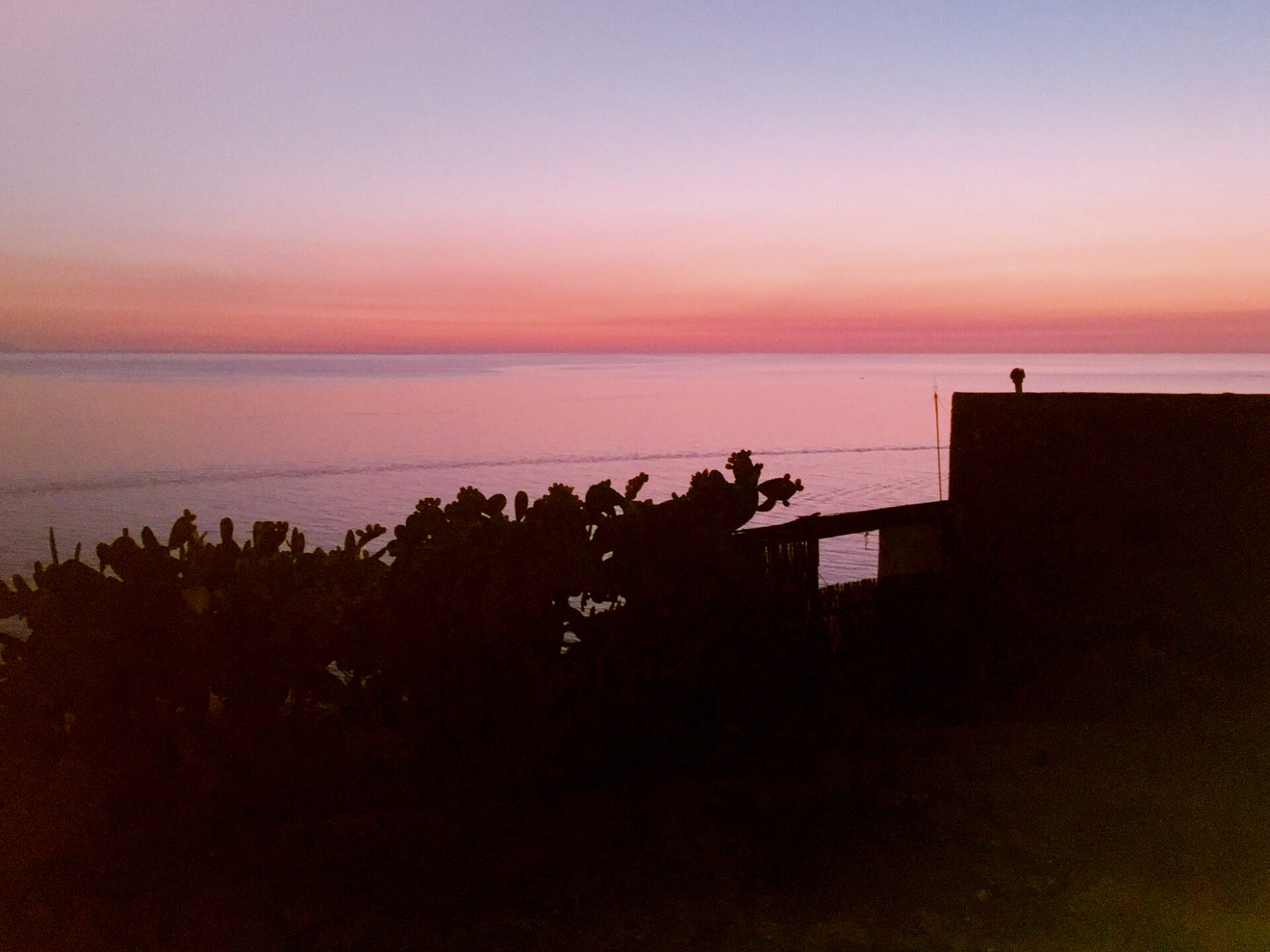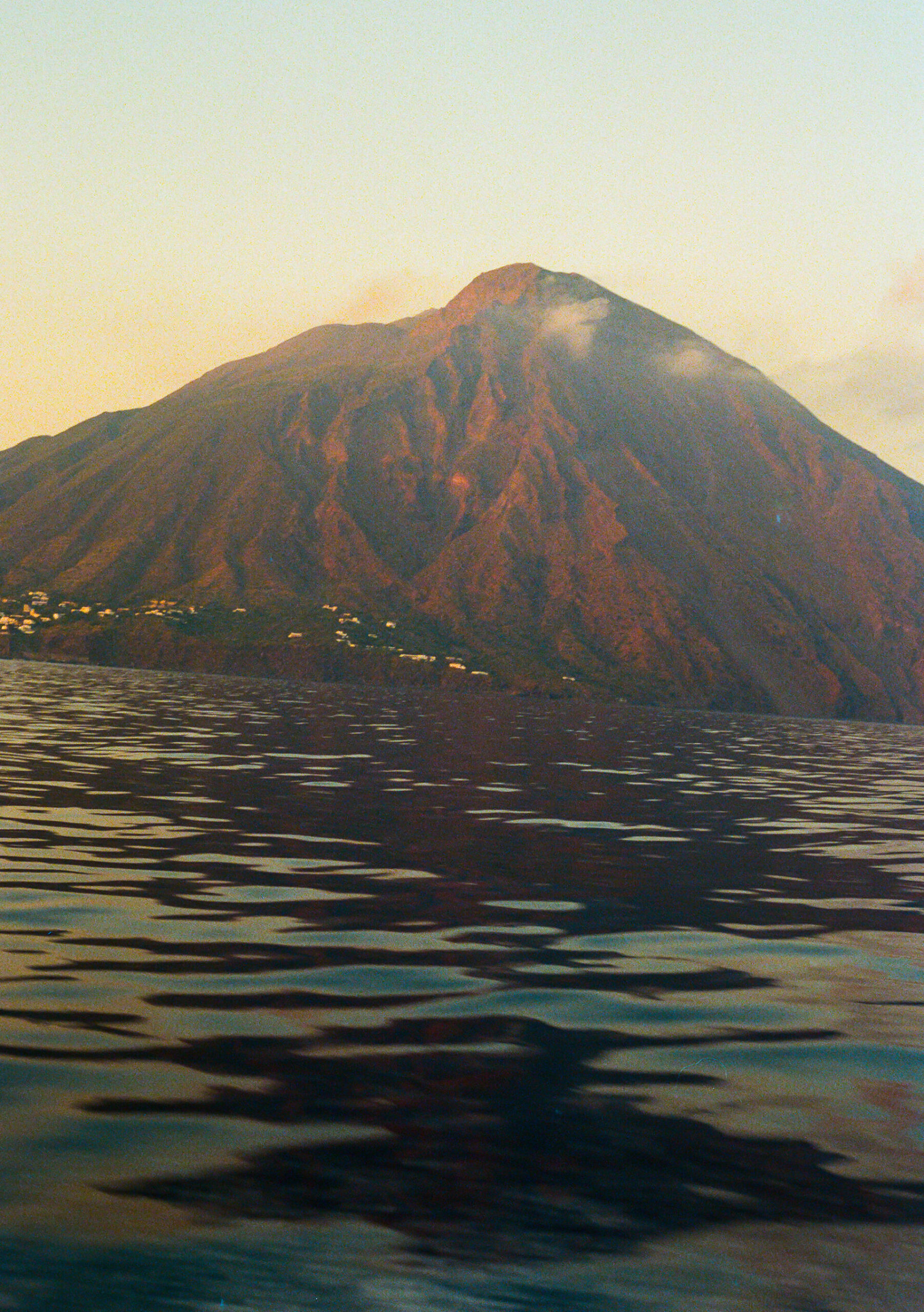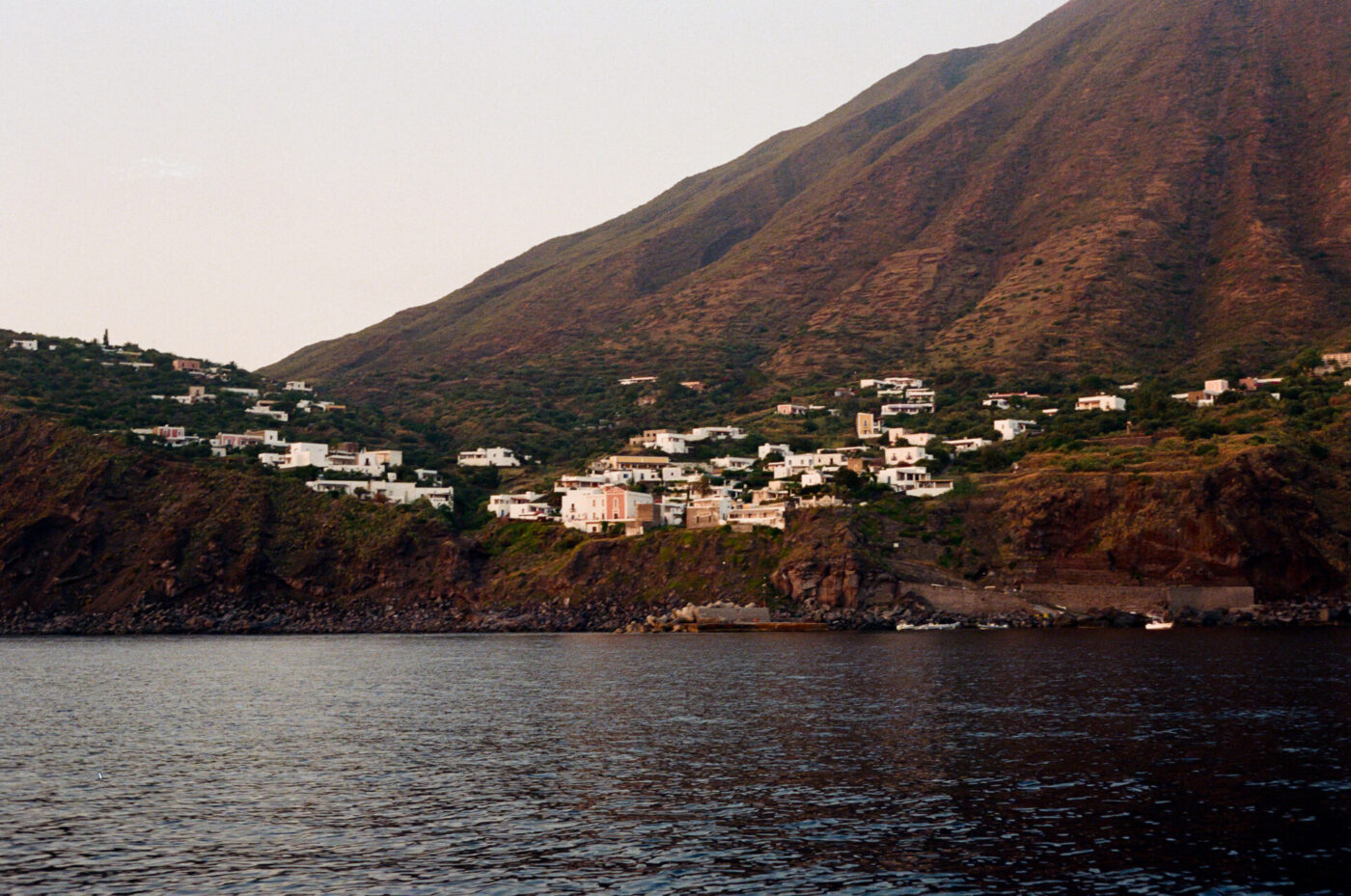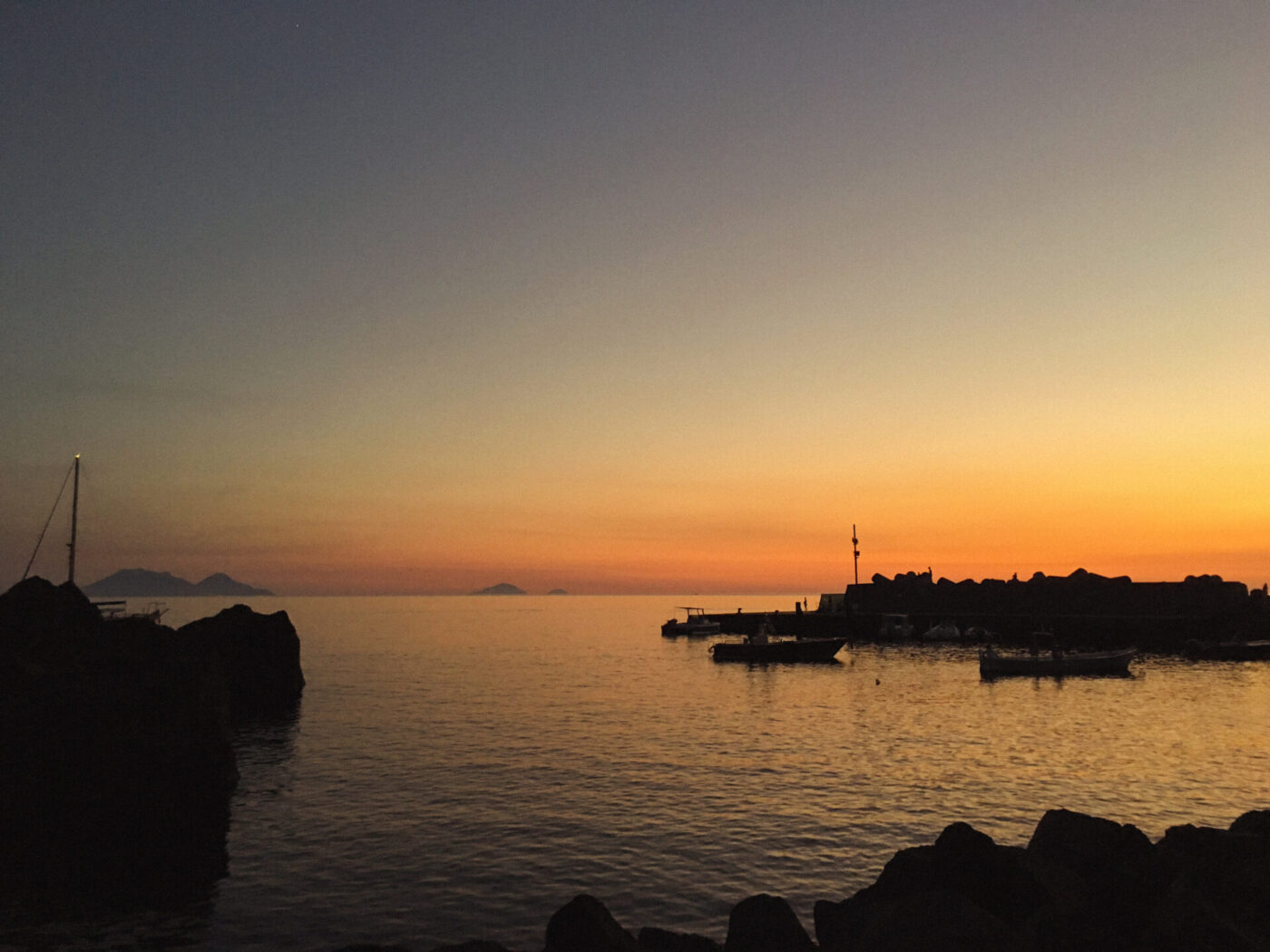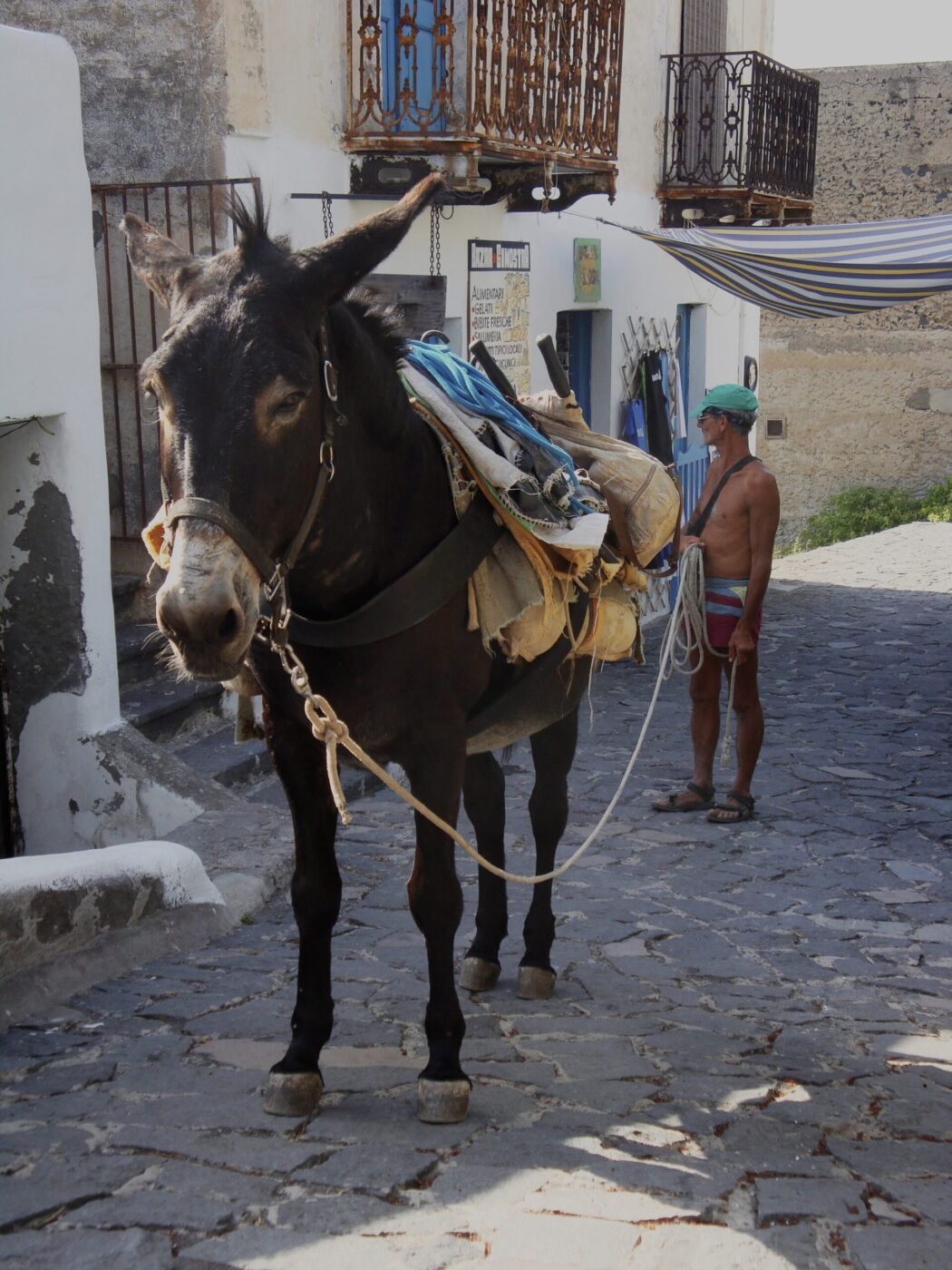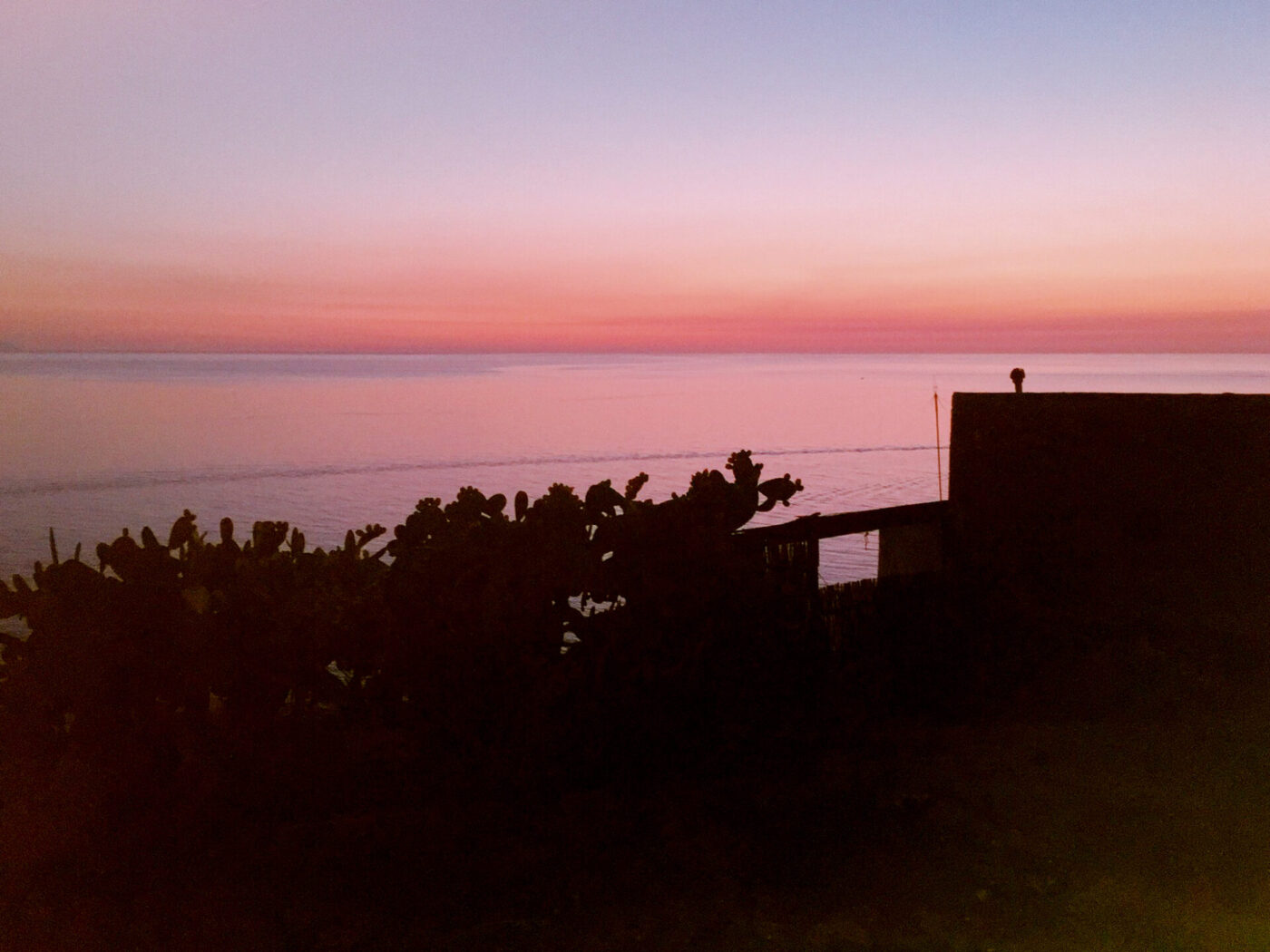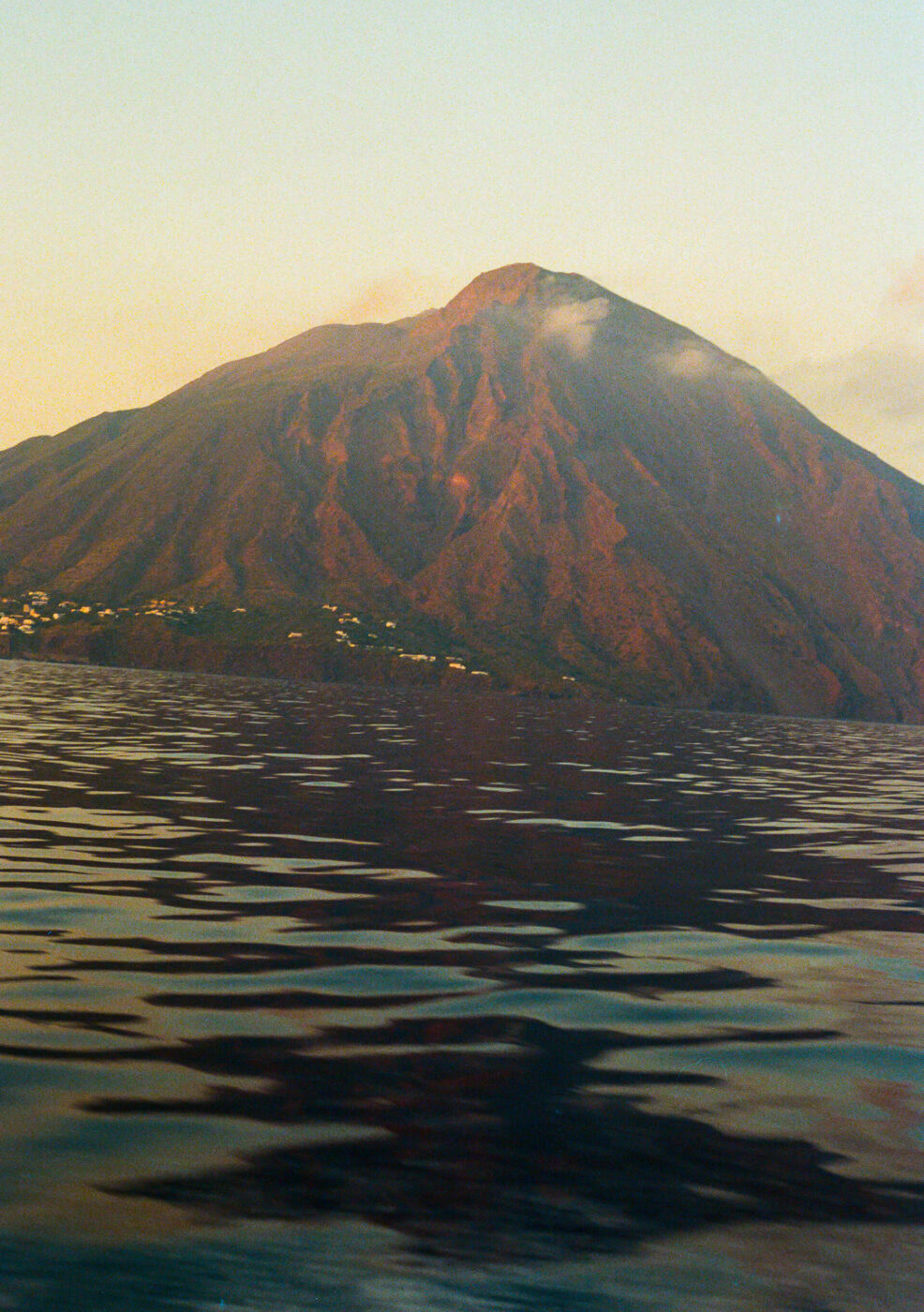Italy is well known for its ability to slow the hands of time. But in Ginostra, a 40-person village at the foot of an almost constantly erupting volcano, time doesn’t just move slowly, it seems to have stepped away altogether.
On the southern flank of Stromboli—one of the Aeolian archipelago’s seven volcanic islands and among the most active volcanoes in Europe—Ginosta is entirely car and scooter free. Without roads or paths connecting it to the rest of the island’s settlements, it’s reachable exclusively by boat.
Ginostra demands your surrender to a kind of radical simplicity. Electricity arrived only two decades ago, as did running water. Not all inhabitants have yet chosen to use it. Most houses have their own well or cistern to collect rainwater. The port, nicknamed “Il Pertuso” (Sicilian for “the little hole”), was the smallest in the world, accommodating just one mooring boat. In 2004, an extension was finally added to allow safer landings in choppier conditions and hasten evacuations in case of a natural (volcano-created) disaster. Whenever public services fall short, the villagers step in to help one another, sharing a generator, offering a jerry can of drinking water, or chasing off the mountain goats that regularly descend to raid crops and damage drystone walls.
During the season, you’ll find just one or two restaurants open and a single alimentari for essentials. Unlike the rest of Sicily, cheap bites and affordable wines are not on the menu here. It’s advisable for visitors to bring groceries on the ferry, cook their own meals, and make the most of the fishermen’s daily catch.
In the 1960s and ’70s, the first tourists to reach Ginostra were left-leaning intellectuals. Artists like photographer Ugo Mulas, members of the Communist Party, and editors from Einaudi were among the many who frequented it. The way of life they embraced—if only for a few weeks each year—was a clear counterpoint to the world’s accelerating pace and a conscious choice to slow down, disconnect, go off-grid, and immerse themselves in the rhythms of island life and its close-knit community.
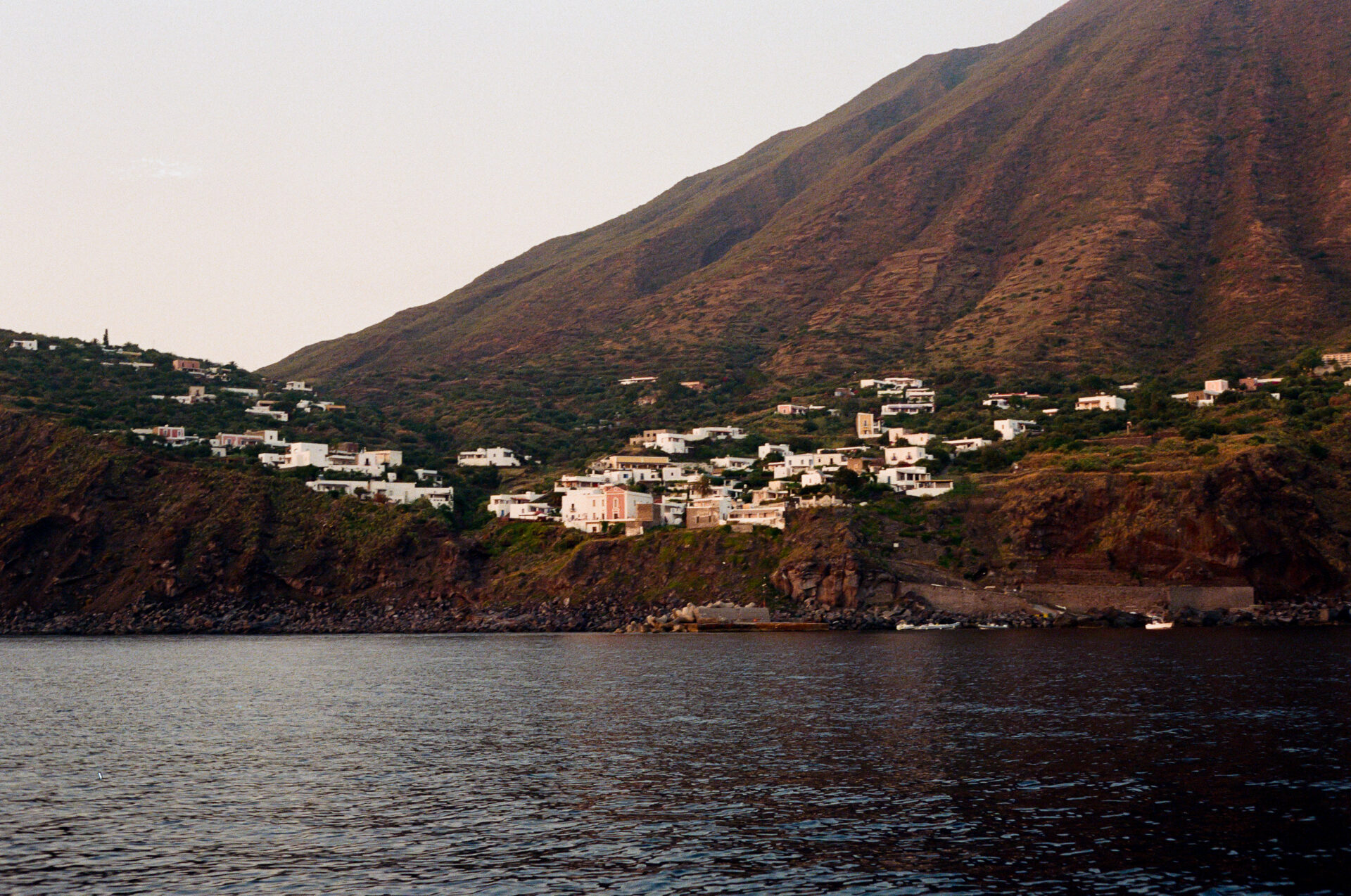
While Ginostra is magical in summer, it’s winter that reveals the strength of its community. When the sea turns rough, towering waves often cut the village off for days. During those stretches, survival depends on a kind of hyper-local self-reliance—the resourcefulness of a country scaled down to a handful of homes.
Only 40 people live here year-round, alongside a small team of donkeys who manage transport duties and contribute no small amount of charm. The rest are seasonal regulars, day-trippers, and holiday-home owners drawn from near and far. In peak season, with overnight capacity capped around 30 to 60 guests and a steady influx of day visitors, the population can swell to nearly 400.
“Almost all of the homeowners were women,” Carla, 76, tells me; the Florentine, a veteran of Italy’s 1970s feminist movement, spent her summers in Ginostra when she was a young woman. “The men were off at sea, fishing. It was the women who truly inhabited the village. I also remember the brothers Gaetano, the handsomest of the island, who played guitar serenades for the young women, and Giovanni who ran the only grocery store. It was no bigger than 15 square meters. And then there were the nudists—we all practiced nudism.”
Manuela, Carla’s best friend (both then and now), extrapolates on what Ginostra felt like to her. “It was magical by day, but especially at night,” she says. “No artificial light, just the stars and the Milky Way, so bright that you couldn’t dream of seeing anything like it. It enchanted generations searching for a different world—more natural, more rugged, more spellbound. And the scirocco wind. It would dry you within minutes after a swim in that clear blue sea.”
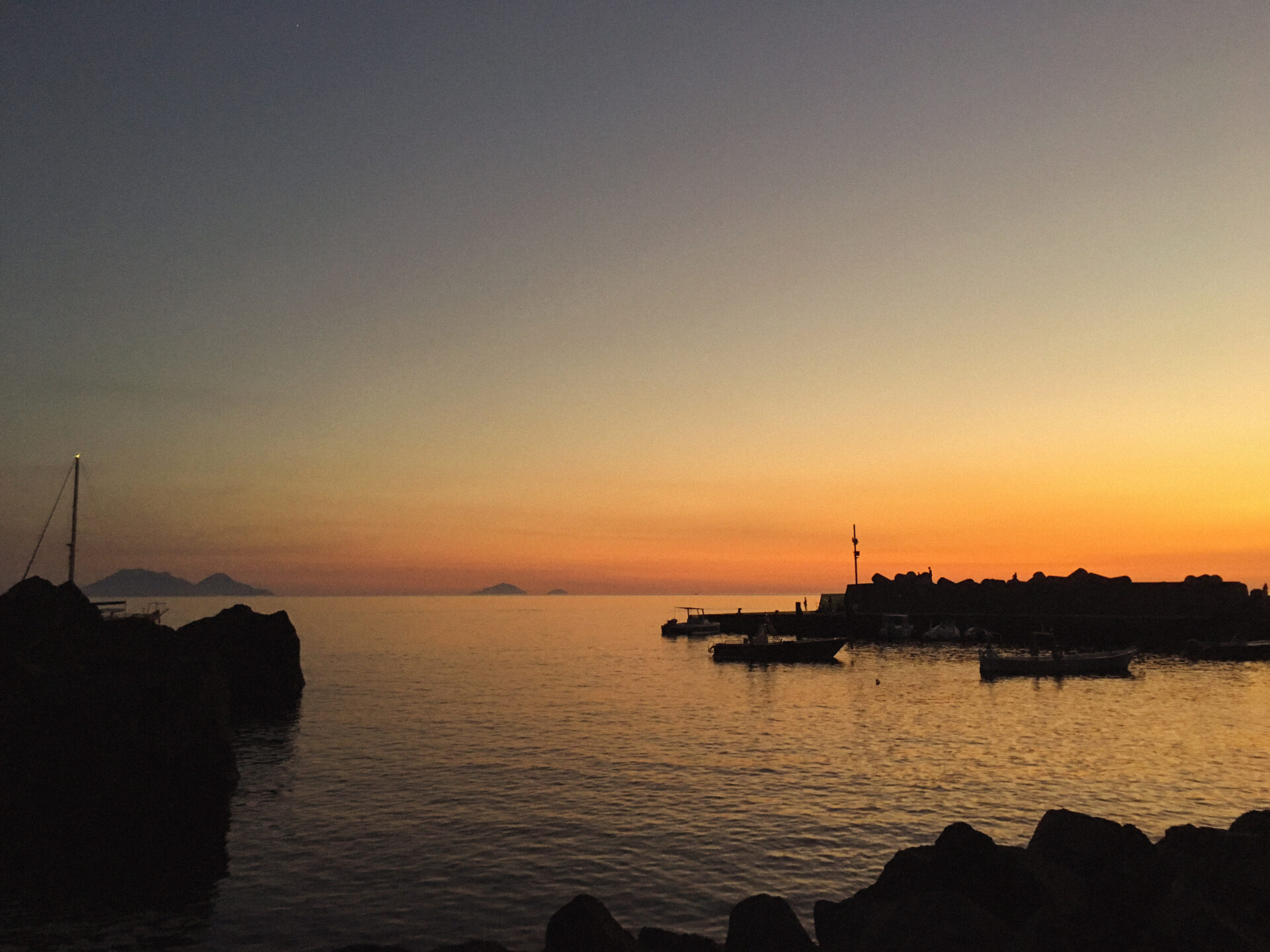
Like most places in the Aeolian archipelago, Ginostra’s superstitions and folklore remain a strong part of local culture. “There was also the presence, for those who felt it, of the women who had dominated the island. Even though they were gone, their presence lingered,” Manuela tells me, referring to the lore that women of the village never truly leave, not even after death. Their spirits are said to linger, watching over the place, maintaining its balance through quiet acts of punishment and reward. “The ghosts are particularly strict about reminding the living to take good care of the graves,” Carla says with a wink.
The volcano too plays its part in this mythic ecosystem. Locals call it Iddu—“he” in Sicilian—a divine male presence whose eruptions are seen as moods or messages. Like the spirits, Iddu is both protector and punisher. “The volcano was alive with such intensity, it sent some visitors packing,” Manuela recalls.
Now a chef in Florence, 40-year-old Filippo looks back fondly on childhood summers spent in Ginostra with his grandparents. “Today you’ll find B&Bs and Airbnbs,” he says, “but even in 2007, finding a place to stay still meant having someone’s phone number. And those numbers were only shared by word of mouth.”
One memory, in particular, stands out to him: the annual screening of Rossellini’s Stromboli (1950), when the entire village would gather in the only square. “The whole event,” he says with a smile, “was justified by a single brief scene near the end—a fleeting glimpse of Ginostra, worthy of its own celebration.”
A few years ago, one of Ginostra’s most iconic residents made local headlines when she passed away: Iside, the beloved donkey who had spent years faithfully carrying luggage from the boat landing up the steep path to the village. Adored by locals and visitors alike, she had become a symbol of Ginostra itself. Today, just four donkeys remain on the island. Three still shoulder the work of hauling garbage and bags along the narrow paths. The fourth, retired from duty, spends her days simply enjoying the view.
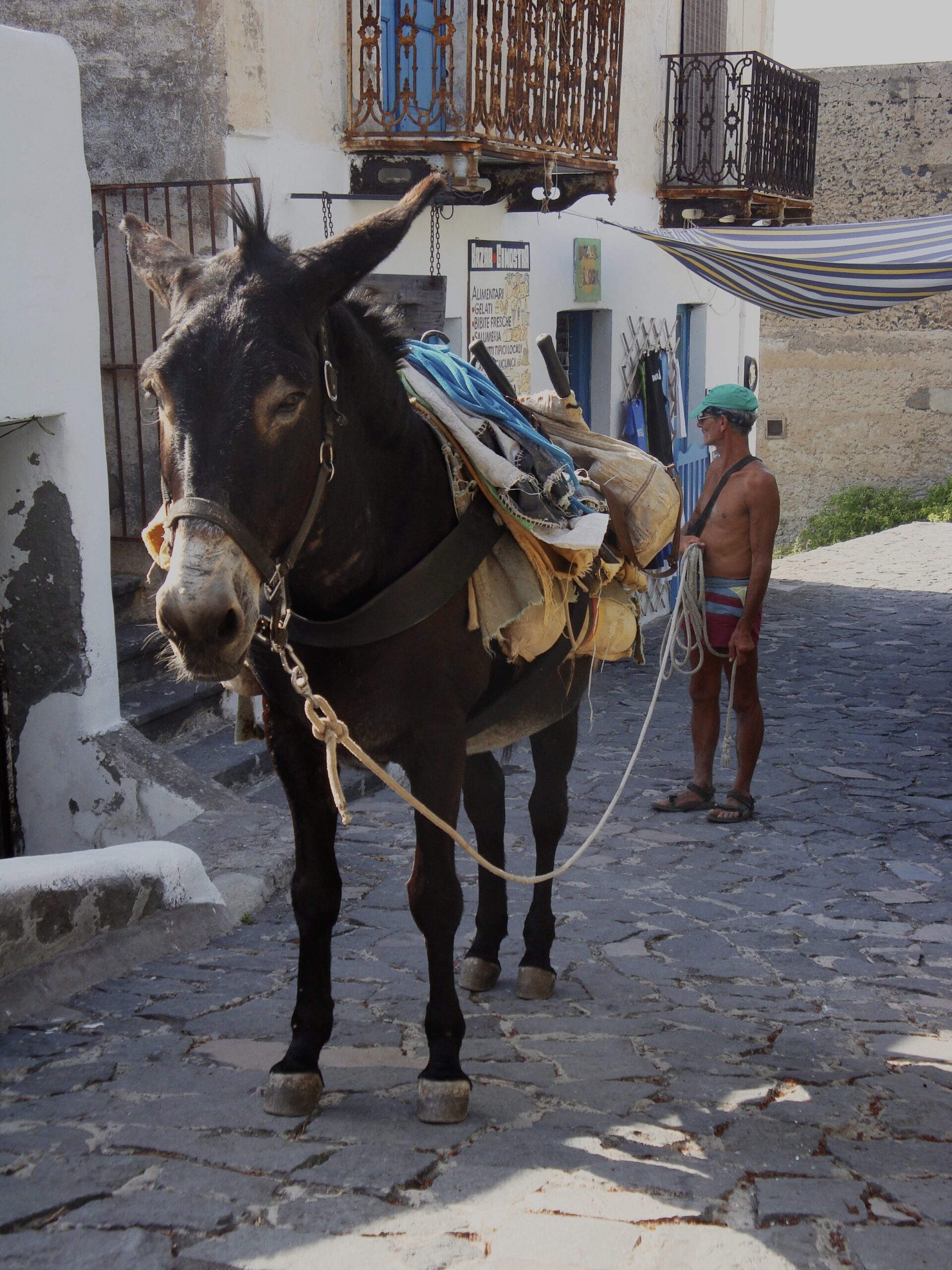
Salvo Cannizzaro, CC BY-SA 3.0 via Wikimedia Commons
“Enchanted paradise. Place of peace” is a TripAdvisor review of Ginostra that rather succinctly sums up most accounts of the village. Visitors unanimously report magical and breathtaking sunsets, a wonderful silence, and unforgettable views of the sea and the volcano alike. Everyone agrees the water is clear and the absence of cars and scooters soothing. Still, Ginostra tends to divide people into two camps: those who can handle and embrace the peace, and those who report they lose their minds after a few days.
There is no shopping here, no curated buzz, no wide selection of busy restaurants, museums, or tours you could book to pass the time. Cell reception is spotty at best.
What Ginostra offers is far, far simpler: your book (if you remembered it), your thoughts, the sea, the stars, and time. The real question is—could you handle it?
